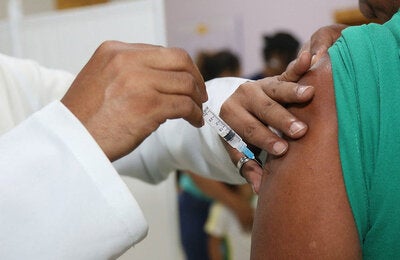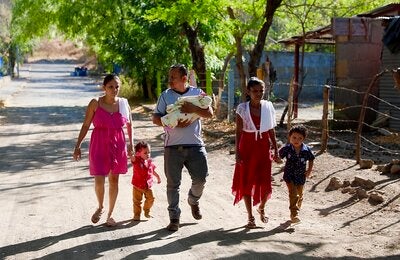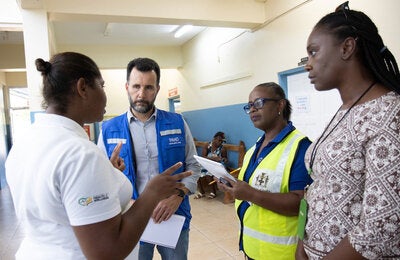
Bridgetown, Barbados, May 21st, 2025 (PAHO). Leprosy elimination is an achievable goal, and it is one which PAHO/WHO and the Organization of Eastern Caribbean States (OECS) is committed to achieving.
This was the assurance given during the webinar on ‘Leprosy Elimination’ hosted by PAHO/WHO and the OECS, for Ministry of Health staff across the Caribbean.
Attendees heard of the St. Lucia leprosy situation from Community Dermatologist with the Ministry of Health, Wellness and Elderly Affairs, Dr. Keturah Edwin-Tobias, one of two panelists. The incidence of new cases of leprosy over the past four years and the current incidence is as follows:
- 2020 – 5
- 2022 – 11
- 2023 – 15
- 2024 – 1
- 2025 – 7 for the first five months of 2025
Dr. Edwin-Tobias gave graphical representation of the cases, which occur in economically depressed areas in St. Lucia. Leprosy has a greater impact in low-income communities, where people reside close to each other and often do not seek health care due to high poverty rates, unemployment, and other inequities and inequalities.
Thanks to the support of PAHO, the treatment offered by the Ministry of Health of single doses of medication given to people in contact with those with leprosy is proving effective in controlling transmission.
Among the needs outlined for St. Lucia was a national action plan, SOPs for the management of leprosy, training of contact tracers and research of the St. Lucia situation.
International PAHO Consultant for Neglected Diseases, Nestor Vera-Nieto, was the second panelist and he outlined the leprosy situation in The Americas.
The virtual attendees heard of the leprosy trend in new cases. Prior to the COVID-19 pandemic, there was a steady decline – from 41,978 in 2007 to 27,354 in 2016. From 2017 to 2019, cases fluctuated between 29,127 and 30,966. In 2020, cases dropped sharply as there were 19,202 new cases. A recovery in detection following the pandemic revealed that cases had increased to 24,771 in 2023.
Vera-Nieto shared key facts about the disease. Leprosy or Hansen disease is caused by the bacteria Mycobacterium leprae. It affects the skin, peripheral nerves, respiratory mucosa, and eyes and can cause permanent disability if not treated early. Contact tracing, education and stigma reduction are key to the treatment of leprosy.
Dr. Roxanne Brizan-St. Martin, Programme Director Health, Social Inclusion and Social Protection OECS, delivered remarks on behalf of Dr. Didacus Jules, Director General of the OECS Commission.
“The OECS Commission remains steadfast in our collaboration with the PAHO Office for Barbados and Eastern Caribbean States, united by our shared vision to achieve the ambitious targets outlined in the Disease Elimination Initiative for our Member States.”
Dr. Brizan-St. Martin said it is imperative that as small states, visibility is brought to these pressing health conditions, particularly considering their profound impact on vulnerable populations.
While there have been notable global achievements in reaching elimination targets, she stated, “these webinars are essential in sustaining momentum through our collaborative efforts under the theme, ‘Acting Together: Putting Communities at the Heart of the Fight Against NTDS.’
During her remarks, PAHO/WHO Representative for Barbados and the Eastern Caribbean Countries (ECC), Dr. Amalia Del Riego, explained that the webinar on leprosy was part of PAHO’s broader Elimination Initiative.
“Behind every case there is a human story,” Dr. Del Riego reminded listeners, adding that leprosy was preventable, subject to elimination criteria.
Dr. Del Riego said technical guidance and enduring partnerships, such as the partnership with the OECS, are key to the management and elimination of leprosy.



